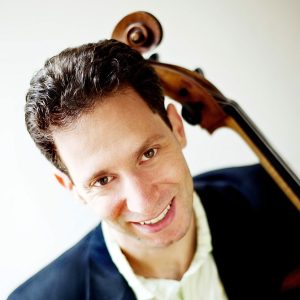
Tour of Duty, Tour of Pleasure
Aron Zelkowicz
A postcard from Vienna:
By the time the Danube winds into concrete beds through Stadtpark, the water is just a trickle. Children in their parkas swing on the playground, the U-bahn train pulls into its station, and people stroll or bike over the canal’s bridges, all within a stone’s throw of the surface. This view from our hotel is lovely and quaint, for those of us on tour with the Pittsburgh Symphony that have north-facing rooms (those with opposite views can peer down on the bustling skating rink next door).
Pittsburghers, no strangers to rivers and bridges, hardly needed reminders of the horrible flooding that occurred this week. The tame canal is at odds with what we’ve seen on the front page of local papers and all over TV. I had just moved from New York a few months ago. My stand partner for this tour, Bronwyn Banerdt, is still based there, scheduled to return to the city and its stalwart pool of musicians. We kept tabs on our musician friends back home who had been dealing with their own setbacks and also throwing their hands in to volunteer like everyone else. As players get back to work with creative commuting, our thoughts are still with those who lost everything.
The greater the disconnect, then, to stay in this most civilized European city during a time of such crisis at home. The rare opportunity of being in Vienna for a weeklong residency of concerts at the famed Musikverein is certainly a coup for any orchestra. Of the 125 musicians on tour, 30 or so were “extra” musicians who were needed to fill out the monumental forces required of Mahler’s second symphony. For subs like myself, this has been an experience to savor.
The miraculous acoustics of the Musikverein have not, to my knowledge, been overstated by anyone. Visually, the “golden hall” is ornate but classy. When the full house lights are on, as they remain during the performance, the walls glow and the audience sits in full view of the musicians to an intensely intimate degree. Take a photo, overexpose it slightly, and watch the room gleam even brighter. The golden goddess statues that flank the shoebox-shaped hall predate “Goldfinger.”
And yet the floor of the stage is rough and wooden. It is a cellist’s dream, since a million endpin holes would go undetected on its battered surface. The orchestra is usually stacked narrowly on steep platforms, but a stage extension has been assembled into the audience to accommodate a chorus in the back (in this case, the polished Wiener Singverein). The cello section as a whole sits closer to the main floor than we did earlier this week for Dvorak’s “New World” symphony, although every inch of space is still at a premium.
Mahler’s “Resurrection” Symphony (No. 2) is a sprawling piece that attempts no less than a quest for meaning in earthly life. The cellos and basses get the whole thing underway in unison, triple fortissimo, “with quite serious and solemn” written above the staff and “wild” written below. According to the maestro’s gestures, the effect is definitely more “wild” than “solemn.” In the past two weeks we have played the work in Pittsburgh, Barcelona, and Madrid–but it never sounded this loud and ferocious. The floor seems to act as a built-in amplifier. Sudden rests punctuate outbursts of fast upward scales. The main funeral march theme then lurches forward, back and forth from very loud to very soft, from 16th notes to triplets. It is thrilling to tear into this violent music, feeling that the hall will let those sounds bloom.
The purpose of this dark and violent opening is that eighty minutes later the listener has been elevated to a more spiritual place, free from pain and fear. The chorus sings:
What was created
Must perish,
What perished, rise again!
Cease from trembling!
Prepare yourself to live!
Mahler’s Second, like Beethoven’s Ninth, pops up on programs whenever the moment calls for a life-affirming statement. The New York Philharmonic used it to commemorate the tenth anniversary of 9/11. The work again seemed emotionally appropriate following this week’s calamities. New Jersey’s governor called for a very real Resurrection as he claimed that “we will rebuild.”
Despite the relative inconveniences and challenges that come with touring: illness, being away from family for three weeks, back to back nights of concerts starting at 10:30pm…the orchestra defined professionalism on a daily basis. Especially in high-pressure moments like tonight’s Mahler “patch” session that immediately followed a recorded live performance, the players performed consistently at the highest level, as grievances were stifled, concentration maintained, and perspective kept. Tensions occasionally run high when traveling and playing in unfamiliar halls, but you would never know it when there was work to be done. Anyone on this tour could appreciate that they were the lucky ones. Our New York brethren were taking financial hits, along with orchestra players in non-hurricane communities, like a couple Minnesotans who had also joined this tour.
And we could play a work that expressed this message of constant renewal, to the extent that the message still helps those of us who can or choose to experience it.
Tags: acoustics, Aron, audience, cello, cellobello, challenges, Dvorak, endpin, gestures, illness, live performances, musicians, orchestras, perspective, stage, struggle, themes, tour, Zelkowicz
